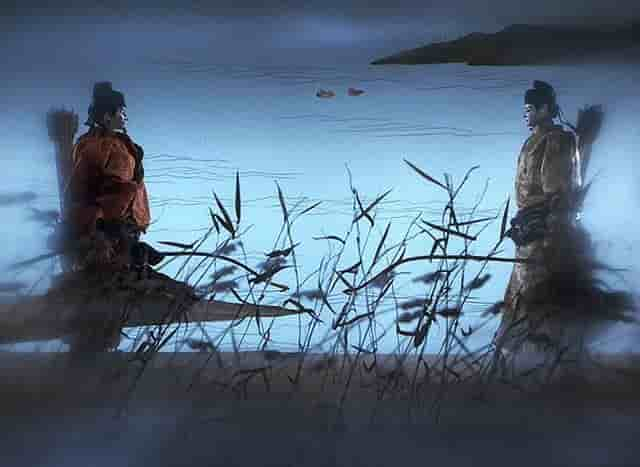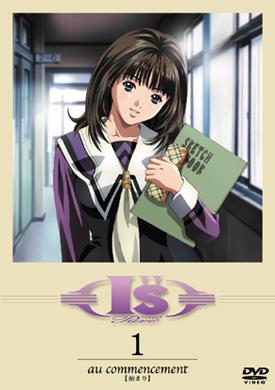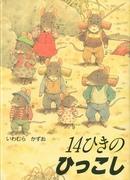The charm and depth of "Fires": Anime reviews and recommendations

The profound world of Kataku: Unraveling Kihachiro Kawamoto's masterpiece■ Public MediaIndependent Production ■ Original MediaAnime Original ■ Release date1979 ■Frequencies19 min ■Original Story・Original story: From the Noh play "Mototsuka" ■ DirectorKihachiro Kawamoto ■ ProductionKawamoto Productions ■ StoryA traveling monk passing through the village of Ikuta in Settsu Province searches for the mound of the mound, hoping to see it as a souvenir of his journey. When he is unable to find it and is about to give up, a young girl appears and begins to tell the story of the mound. Five hundred years ago, a devout and beautiful Unaiotome lived in this area. Two men, Sasadaonoko and Chinunomasurao, were burning with love for the virgin, and by chance, they sent letters to each other on the same day and at the same time, but the virgin, unable to hurt the other, refused to reply. One windy day, the two men competed for the virgin's love by shooting mandarin ducks with bows. Grieving that they had caused the death of an innocent mandarin duck, the virgin drowned herself in the Ikuta River. In their grief, the two men stab each other to death, but their bodies turn into flames and pursue the virgin, tormented by fire for five hundred years. The house on the cliff was engulfed in flames, and the maiden jumped into the rough waves, clutching the scriptures. The maiden rose from the depths of hell, saying that the Buddha's teachings had reached her and that a moment of relief had appeared, and vanished into Motomezuka. The traveling monk, on a journey that could not be determined as to whether it was a dream or reality, left the village of the living, dyed crimson red, behind. ■ExplanationKihachiro Kawamoto wanted to express this hopeless story in puppet animation, using the Noh play "Kyotsuzuka" that he had heard from Tadashi Iizawa as his subject. Even before making "Dojoji," he had been eager to turn "Fires on the Beach" into a work, but Kawamoto was challenged with how to express fire and water. The depiction of water in the Hidaka River in "Dojoji" and the flames of obsession spit out by the giant snake led to the expression of the torture of fire and rough waves in "Fires on the Beach." Up until now, the theme of his works has been "obsession," but in this work, Utenahijo is depicted as suffering because she has no "obsession." Also, while his previous works were in the style of picture scrolls that unfolded from right to left, "Fires on the Beach" shows a new expression of space, adding movement from the front to the back. Kawamoto wondered if he could create a three-dimensional movement that was like a Japanese painting, and attempted a cinematic expression of space that was conscious of depth. The scene of Tsuyoshi Chinuma walking among the red plum blossoms is very beautiful, along with the monk who goes into the bushes and the superb animation of the horse that even Czech animators are impressed with. Also, since "Hanaori", the painting style of Tsuyoshi Mibu, who was in charge of the background paintings, has changed to incorporate perspective. The expression of wind shown in "Dojoji" is sublimated in "Fires". The maiden's feather robe flutters in the wind as she watches two male prostitutes by the Ikuta River, and her long hair, which falls on her beautiful but sad face, is torn by the wind caused by the men's spirit. Utenahi Maiden entrusts her fate to her crystal rosary, but she cannot contain herself in the extreme tension and the rosary flies violently into a thousand pieces. This tense atmosphere and the mysterious expression of the dolls are outstanding among the absurdist trilogy ("Oni", "Dojoji" and "Fires"). ■Cast・Shizuo Kanze ■ Main staff・Creational direction: Kihachiro Kawamoto, Hirokazu Minegishi, Tokiko Ohmukae, Satoru Yoshida, Mikio Miyazawa, Hiroshi Nasenji ・Screenplay: Kihachiro Kawamoto ・Cinematography: Minoru Tamura ・Art direction: Takashi Komae, Masami Tokuyama, Tomoo Haraguchi, Ryo Nakagawa ・Editing: Naoko Aizawa ・Music: Toru Takemitsu, Tokyo Concerts ・Sound: Isamu Katto ■Detailed explanation and evaluation"Fires on the House" by Kihachiro Kawamoto is an animated film based on the Noh play "Motsuzuka," and is highly praised for its profound theme and beautiful visual expression. This work was produced independently in 1979, and in just 19 minutes, it depicts the complexity of human psychology and the cruelty of fate. The story begins when a traveling monk visits the village of Ikuta in Settsu Province and hears the legend of Motomezuka. The tale tells of a tragic love story from 500 years ago, in which two men fight over the beautiful maiden Utenahi, who ends up taking her own life. This story symbolizes the suffering that comes from obsession and the human condition seeking salvation. In this work, Kawamoto Kihachiro took on the challenge of expressing fire and water. Utilizing the techniques he had developed in "Dojoji," he enhanced the visual impact by realistically depicting the movement of flames and the flow of water. In particular, the scene in which the virgin is engulfed in flames from the burning house leaves a strong impression both visually and psychologically. He also skillfully portrayed the wind, and the scene in which the maiden's feather robe dances in the wind evokes both beauty and sadness. "Fires" attempts a different spatial expression from Kawamoto's previous works. It breaks away from the traditional picture scroll style and adds movement from the foreground to the background, providing a more three-dimensional visual experience. This new expression technique adds visual depth and heightens the tension of the story. In addition, the use of perspective in the background paintings pursues visual realism. Music also plays an important role. Toru Takemitsu's music deepens the emotion of the story and, together with the visual expression, enhances the worldview of the work. In particular, the music in the scene where the virgin drowns herself emphasizes the tragic atmosphere and moves the viewer's heart. "Fires on the House" is one of the most highly acclaimed works in the Absurdist Trilogy, and is a brilliant example of Kawamoto Kihachiro's successful fusion of technical challenge and profound themes, resulting in a film that leaves a strong visual and psychological impact. ■ Recommendations and related worksAfter watching "Fires," be sure to check out other works by Kihachiro Kawamoto. "Dojoji" and "Oni" are similarly characterized by their profound themes and beautiful visual expressions. Other works based on the Noh play "Motsuzuka" are also interesting. Watching the Noh play will give you a deeper understanding of the culture and tradition behind "Fires." We also recommend Czech animations. Czech animators were impressed by the horse animation in "Houses on Fire," and there are many Czech animations that are technically and artistically excellent. Look for works that pursue visual beauty and deep themes, just like "Houses on Fire." "Fires" is a work that allows us to feel the talent of Kihachiro Kawamoto, who is able to depict deep themes in a short amount of time. This work, which allows us to experience both visual beauty and psychological depth at the same time, is definitely worth seeing at least once. |
<<: Kirin Classic Romance Theatre "Julie of the Roses" Review: A fusion of moving classics and story
>>: "Run Meros": A reevaluation of this fast-paced tale of youth and friendship
Recommend
Shueisha launches high-energy APP "World Maker" that only takes 10 minutes to visualize ideas
When you have a new idea or inspiration, do you l...
Fantastic Beasts: A Dumbledore Story postponed to June 7
Today (April 19), the official Weibo account of t...
HBO's Green Lantern live-action series announces first cast
HBO Max's Green Lantern Corps live-action ser...
Liu Yifei's version of "Mulan" movie approved in the country, plot revealed
Disney's live-action film "Mulan" s...
The appeal and evaluation of Portrait of Cosette Vol.0 <Limited Edition>: A deep look into this special book
Portrait of Cosette Vol.0 <Limited Edition>...
The appeal and evaluation of "Lemon Angel [YJ version]": Digging deeper into the nostalgic OVA
Comprehensive evaluation and recommendation of &q...
"Dying to Survive" and "Inception" top Douban's list of the best movies of the 2010s
Douban recently released the [Best Movies of the ...
The appeal and evaluation of Seto no Hanayome OVA: A deeper story and the evolution of characters
Detailed review and recommendation of Seto no Han...
Appeal and Review of the Film "Earwig and the Witch": Studio Ghibli's New Adventure
"Earwig and the Witch" - Studio Ghibli&...
The animation "Alien Monster City" has confirmed the production of a sequel
The production of the sequel to the animation &qu...
Spider-Man: No Return surpasses Avengers 3 in North American box office
"Spider-Man: No Homecoming" grossed ano...
The 2020 Autumn Anime Disc Sales Chart is out, with LoveLive! leading the pack
Recently, the Japanese media player community rel...
"Otomo Katsuhiro Complete Works" will be released in 2021. Hollywood live-action movie "Akira" is suspended indefinitely
Today, January 6, Kodansha officially announced t...
Inside Out 2 Chinese Dubbing Trailer Released on June 21
Today (May 29), Pixar officially released the dub...
The appeal and reviews of "Saint Seiya: Saintia Sho": A story of new warriors
Saint Seiya Saintia Sho - Review and Recommendati...









